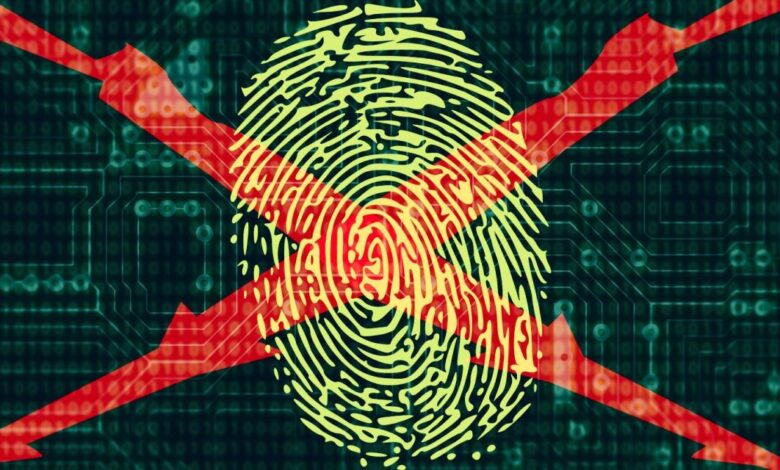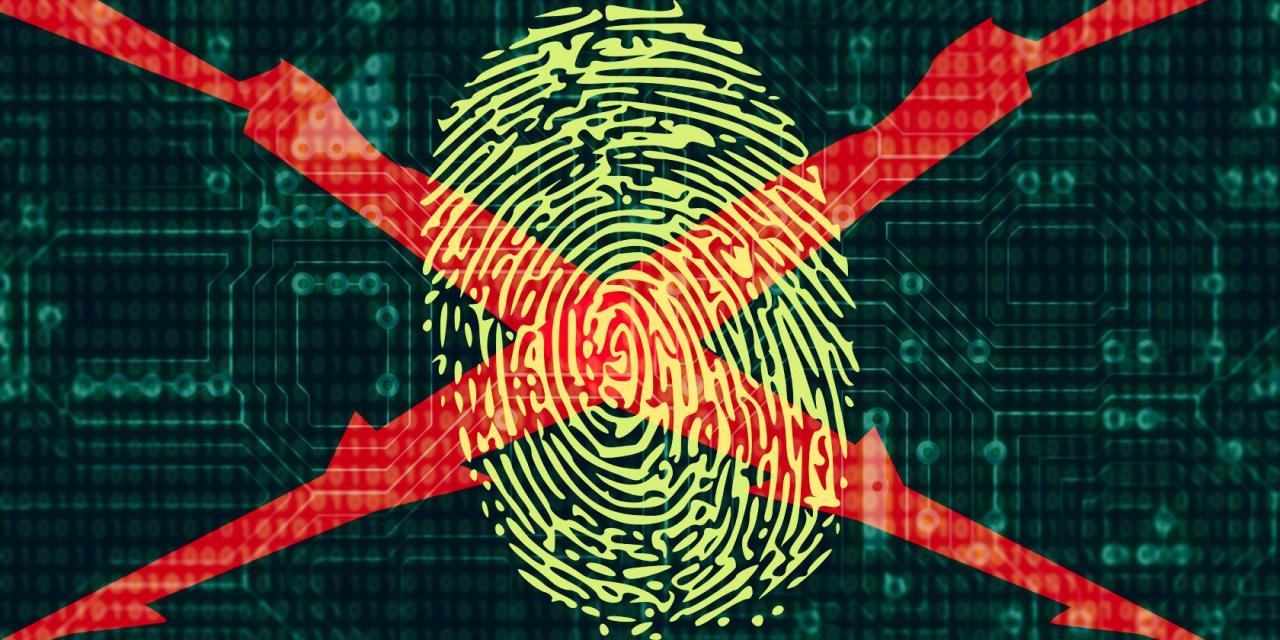
Are We Experiencing the End of Biometrics?
Are we experiencing the end of biometrics? It’s a question increasingly on everyone’s mind as technology advances and concerns about privacy and security reach a fever pitch. From fingerprint scanners to facial recognition, biometric authentication has become ubiquitous, yet its inherent vulnerabilities are becoming clearer. This post delves into the complexities surrounding the future of biometrics, exploring the limitations of current systems, ethical dilemmas, and the rise of alternative authentication methods.
We’ll examine the technological hurdles, such as spoofing and the limitations in accuracy across diverse populations. Then, we’ll dive into the ethical minefield of data privacy and security, discussing the potential for misuse and the urgent need for stronger regulations. Finally, we’ll explore the promising alternatives emerging on the horizon, from behavioral biometrics to multi-factor authentication, and consider the evolving public perception of this technology and its impact on its future.
Technological Limitations of Current Biometric Systems: Are We Experiencing The End Of Biometrics

Biometric authentication, while offering a convenient alternative to passwords, isn’t without its significant drawbacks. Current systems, despite advancements, remain vulnerable to various technological limitations that compromise their security and reliability, impacting their widespread adoption and trust. These limitations stem from both inherent weaknesses in the technologies themselves and their susceptibility to external factors.
Vulnerabilities of Fingerprint, Facial, and Iris Recognition Systems
Fingerprint, facial, and iris recognition systems, while seemingly advanced, possess inherent vulnerabilities. Fingerprint scanners, for instance, can be fooled by high-quality fake fingerprints created from readily available materials like gelatin or silicone. Facial recognition systems are susceptible to spoofing through photographs, videos, or even 3D masks. Similarly, iris recognition can be compromised using contact lenses or digitally manipulated images.
These methods exploit the limitations of the algorithms used to analyze biometric data, which can be tricked into accepting fraudulent inputs.
Spoofing and Bypassing Biometric Systems
The ease with which biometric systems can be spoofed is a major concern. Advances in 3D printing and image manipulation techniques have made it relatively simple to create realistic replicas of fingerprints, faces, and even irises. Sophisticated attacks can involve using deepfakes – realistic, artificially generated media – to bypass facial recognition. Furthermore, vulnerabilities in the software and hardware used to process biometric data can be exploited to gain unauthorized access.
The availability of open-source tools and readily accessible information on these vulnerabilities exacerbates the problem.
Limitations in Diverse Populations
Biometric systems often exhibit biases and limitations when dealing with diverse populations. For example, fingerprint recognition can be less accurate for individuals with damaged or worn fingerprints due to age or manual labor. Facial recognition systems have demonstrated higher error rates for individuals with darker skin tones or those belonging to specific ethnic groups. Individuals with disabilities, such as those with visual impairments affecting iris recognition or those with conditions impacting fingerprint clarity, also face challenges.
This disparity highlights the need for more inclusive and equitable biometric technologies.
Accuracy and Reliability Across Various Environmental Conditions
The accuracy and reliability of biometric systems can vary significantly depending on environmental factors. Poor lighting conditions can significantly impact the performance of facial and iris recognition systems. Extreme temperatures can affect fingerprint sensors and lead to inaccurate readings. Similarly, dirt, moisture, or damage to the biometric feature itself can compromise the accuracy of the system. These environmental variables highlight the need for robust and adaptable systems that can function reliably across a wider range of conditions.
So, are we experiencing the end of biometrics? I’ve been wondering lately, especially considering the security implications. Perhaps the future lies in more robust authentication methods, like those explored in the article on domino app dev the low code and pro code future , which suggests a shift towards more sophisticated software solutions. Ultimately, the question of biometrics’ longevity hinges on our ability to create truly secure and reliable alternatives.
Comparison of Biometric Technologies
| Biometric Technology | Strengths | Weaknesses | Vulnerabilities |
|---|---|---|---|
| Fingerprint Recognition | Widely available, relatively inexpensive | Susceptible to damage, aging, and spoofing | Fake fingerprints, compromised sensors |
| Facial Recognition | Convenient, contactless | Affected by lighting, age, and expression; biases exist | Photographs, videos, deepfakes |
| Iris Recognition | High accuracy, difficult to spoof | Requires close proximity, sensitive to environmental conditions | Contact lenses, digitally manipulated images |
| Voice Recognition | Convenient, remote authentication possible | Susceptible to impersonation, affected by background noise | Voice recordings, voice synthesizers |
| Behavioral Biometrics | Passive authentication, less intrusive | Requires extensive data collection, accuracy can vary | Sophisticated spoofing techniques potentially possible |
Privacy Concerns and Ethical Implications
The increasing reliance on biometric technologies presents a complex web of privacy concerns and ethical dilemmas. While offering enhanced security and convenience, the collection, storage, and use of sensitive biometric data raise significant questions about individual rights and societal well-being. The potential for misuse is substantial, demanding careful consideration of the implications for both individuals and society as a whole.The potential for misuse of biometric data is a significant concern.
Biometric data, once compromised, cannot be changed like a password. This permanence makes it a particularly attractive target for malicious actors.
Surveillance and Mass Tracking
The inherent ability of biometric systems to uniquely identify individuals makes them powerful tools for surveillance and mass tracking. Governments and corporations could potentially use this technology to monitor citizens’ movements, activities, and associations without their knowledge or consent. Imagine a scenario where facial recognition technology is ubiquitously deployed in public spaces, creating a comprehensive database of individuals’ whereabouts.
Such a system could easily be abused to suppress dissent, track political opponents, or even facilitate discriminatory practices. The chilling effect on freedom of expression and assembly is undeniable. Existing examples, such as the use of facial recognition by law enforcement in some countries, highlight the potential for abuse.
Data Security Breaches and Identity Theft
Biometric data breaches pose a particularly severe threat. Unlike passwords, which can be changed, compromised biometric data is irreplaceable. A breach could lead to identity theft, financial fraud, and other serious consequences. The consequences of identity theft using biometric data are potentially far-reaching, as it could involve accessing sensitive financial accounts, medical records, or even impersonating an individual for nefarious purposes.
The Equifax data breach, though not specifically biometric, serves as a stark reminder of the devastating consequences of large-scale data breaches and the potential for long-term damage to individuals’ lives and credit history.
Existing Regulations and Legislation, Are we experiencing the end of biometrics
Several regulations and laws address the collection and use of biometric data, although their scope and effectiveness vary significantly across jurisdictions. The European Union’s General Data Protection Regulation (GDPR) provides a framework for the protection of personal data, including biometric data, emphasizing consent and data minimization. In the United States, various state laws address specific aspects of biometric data use, such as Illinois’ Biometric Information Privacy Act (BIPA), which places restrictions on the collection and storage of biometric identifiers.
However, a comprehensive federal law regulating biometric data remains elusive, leading to a fragmented and inconsistent regulatory landscape.
Privacy Implications Compared to Password-Based Systems
Biometric authentication, while offering convenience, presents distinct privacy implications compared to traditional password-based systems. Passwords, while vulnerable to breaches, can be changed, offering a degree of control to the user. Biometric data, however, is immutable. A compromised biometric identifier is lost forever. Furthermore, password-based systems typically only reveal a user’s identity upon successful authentication, whereas biometric systems inherently collect and store sensitive data, even when not actively used for authentication.
This inherent data collection significantly increases the risk of misuse and abuse.
Mitigating Privacy Risks
The risks associated with biometric technology are substantial, but several strategies can help mitigate these risks.
- Strong data encryption and security protocols to protect biometric data from unauthorized access.
- Strict data minimization principles, collecting only the necessary biometric data and for limited purposes.
- Transparency and user consent regarding the collection and use of biometric data.
- Robust data breach response plans to minimize the impact of any security incidents.
- Regular audits and independent security assessments to ensure the effectiveness of security measures.
- Legislation and regulation that establishes clear guidelines and accountability for the use of biometric data.
- Development of privacy-enhancing technologies, such as differential privacy and federated learning, to minimize the risks associated with data collection and analysis.
Emergence of Alternative Authentication Methods
The limitations of biometric systems, particularly concerning privacy, security, and cost, are driving the exploration of alternative authentication methods. These alternatives offer a diverse range of approaches, each with its own strengths and weaknesses, and often work best when combined with other methods for enhanced security. This exploration looks at several promising alternatives and their potential to reshape the authentication landscape.
Passwordless Authentication Systems
Passwordless authentication systems represent a significant shift away from traditional password-based logins. These systems leverage various methods to verify a user’s identity without requiring them to remember and input a password. Instead, they might use methods like one-time passcodes (OTPs) sent via SMS or email, or authentication apps generating time-sensitive codes. Some systems utilize push notifications, allowing users to simply approve a login attempt on their trusted device.
Compared to biometrics, passwordless systems can offer improved security by eliminating the risk of password breaches and phishing attacks. Usability is generally high, particularly for systems using familiar devices like smartphones. However, the cost-effectiveness can vary, depending on the chosen implementation and the level of security required. For example, implementing a robust OTP system with multi-factor authentication can be more expensive than relying solely on passwords, but it offers significantly enhanced security.
Hardware Security Keys
Hardware security keys are small physical devices that plug into a computer’s USB port or connect via Bluetooth. These keys use cryptographic techniques to verify a user’s identity, offering a strong layer of security against phishing and other online attacks. Unlike biometrics, which rely on biological characteristics, security keys depend on possession of the physical device. This makes them highly resistant to remote attacks.
In terms of usability, they are generally straightforward to use, though they require the user to carry an additional device. The cost is relatively low, with many security keys available for under $50. Their cost-effectiveness stems from their high security and low risk of compromise compared to the potential financial losses associated with password breaches or biometric data theft.
Google, Microsoft, and other major tech companies widely support security keys, making them a viable alternative for many users.
Knowledge-Based Authentication
Knowledge-based authentication leverages information only the user should know, such as answers to security questions or personal details. While often considered less secure than biometrics or hardware security keys due to susceptibility to social engineering and data breaches, its simplicity and low cost make it a prevalent method, particularly for less sensitive applications. Usability can be high, depending on the design of the questions and the user interface.
The cost-effectiveness is generally excellent, as it requires minimal infrastructure. However, security weaknesses are apparent; well-designed security questions are crucial to minimize vulnerabilities. Improvements focus on creating more robust and less predictable questions, often combined with other authentication factors to improve security.
Behavioral Biometrics: An Evolving Landscape
Behavioral biometrics, such as typing rhythm, mouse movements, and gait analysis, offer a unique approach to authentication. These methods analyze unique behavioral patterns to identify individuals. The security of behavioral biometrics depends on the accuracy and robustness of the algorithms used for pattern recognition. Usability can be high as it often works passively in the background. Cost-effectiveness is also promising as it often requires minimal additional hardware.
However, concerns remain regarding the potential for spoofing and the need for large datasets for accurate training. Examples of successful implementations include systems analyzing typing patterns to detect unauthorized access attempts and gait analysis for security access control in high-security facilities. This technology is still developing, but its potential for seamless and passive authentication is significant.
Multi-Factor Authentication (MFA)
Combining multiple authentication factors significantly enhances security. MFA often uses a combination of something you know (password), something you have (security key), and something you are (biometric). This layered approach mitigates the risks associated with relying on a single authentication method. While the usability might be slightly reduced compared to single-factor authentication, the enhanced security outweighs the inconvenience for many applications.
The cost-effectiveness depends on the chosen factors, but the overall security benefits often justify the increased cost. MFA is widely adopted by financial institutions, online services, and other organizations handling sensitive data, demonstrating its effectiveness and practicality. For instance, a bank might require a password, a one-time code from an authentication app, and fingerprint recognition for access to online banking.
The Role of Public Opinion and Acceptance
Public perception of biometric technologies is complex and multifaceted, significantly impacting their adoption and implementation. While offering enhanced security and convenience, biometrics also raise significant privacy and ethical concerns, shaping public opinion and influencing governmental policies. Understanding this dynamic interplay is crucial for responsible technological advancement.Public trust in biometric systems is fragile and easily eroded. Security breaches, data leaks, and instances of misuse severely undermine public confidence.
A single high-profile incident, such as a large-scale data breach involving facial recognition data, can trigger widespread distrust and resistance to further biometric implementation. This distrust is further amplified by a lack of transparency regarding data handling practices and a perceived lack of control over personal biometric information.
Public Concerns Regarding Biometric Technologies
The prevalent concerns surrounding biometric technologies center around several key areas. Firstly, data security and privacy are paramount. The potential for misuse of biometric data, whether for surveillance, identity theft, or discrimination, is a major source of anxiety. Secondly, the accuracy and reliability of biometric systems are frequently questioned. Concerns exist about potential errors leading to false positives or negatives, resulting in wrongful identification or denial of access.
Thirdly, the lack of regulatory frameworks and oversight surrounding the collection, storage, and use of biometric data contributes to public apprehension. Finally, the potential for bias in biometric algorithms, leading to discriminatory outcomes for certain demographic groups, is a growing ethical concern.
The Impact of Security Breaches and Privacy Violations on Public Trust
The impact of security breaches and privacy violations on public trust in biometric systems is substantial and long-lasting. High-profile incidents involving the theft or unauthorized access to biometric data can lead to a significant decline in public confidence. For example, a breach exposing facial recognition data could lead to widespread concerns about identity theft and surveillance, fueling public resistance to the technology.
This erosion of trust can hinder the adoption of biometric systems, even in scenarios where they offer significant security advantages. Restoring trust after such breaches requires transparent investigations, robust security measures, and clear communication with the public.
Public Attitudes Towards Biometrics in Different Countries or Regions
Public attitudes towards biometrics vary significantly across different countries and regions, influenced by cultural norms, levels of technological literacy, and existing regulatory frameworks. For instance, countries with strong data protection laws and a history of government surveillance may exhibit greater skepticism towards biometric technologies compared to countries with less stringent regulations. Similarly, public acceptance might be higher in regions where biometric systems are already widely used and perceived as beneficial, such as in certain sectors of transportation or border control.
A comparative analysis of public opinion surveys and policy debates across different geographical areas would reveal these nuanced differences.
Effective Communication Strategies for Influencing Public Acceptance
Effective communication strategies are essential for building public trust and fostering acceptance of biometric technologies. Transparency regarding data handling practices, clear explanations of security measures, and proactive engagement with public concerns are crucial. This involves educating the public about the benefits of biometrics while acknowledging and addressing potential risks. Building trust requires demonstrable commitment to data privacy and security, including robust safeguards against misuse and unauthorized access.
Furthermore, open dialogues with stakeholders, including civil society organizations and privacy advocates, can help shape responsible policies and foster a more informed public discourse.
The Future Landscape of Authentication

The current landscape of authentication is in a state of flux. While biometrics have made significant strides, limitations in accuracy, privacy concerns, and the emergence of alternative methods are pushing the field towards a more diverse and sophisticated future. The coming decade will likely see a significant shift in how we prove our identity, driven by advancements in technology and evolving societal expectations.
Predicted Trajectory of Biometric Technology
Biometric technology will continue to evolve, focusing on improved accuracy, reduced vulnerability to spoofing, and enhanced user experience. We can expect to see a move away from single-factor authentication towards multi-modal systems, combining different biometric traits for stronger security. For instance, facial recognition might be combined with fingerprint or voice recognition to create a more robust authentication system.
Furthermore, advancements in sensor technology will allow for more convenient and less intrusive biometric capture. Think of seamlessly integrated sensors in everyday devices, unobtrusively capturing biometric data in the background. This will move beyond the current paradigm of needing to actively scan or input your biometric data.
Advancements Addressing Current Challenges
Addressing the limitations of current biometric systems will involve leveraging advancements in AI and machine learning. AI-powered algorithms will play a crucial role in improving accuracy and reducing error rates, particularly in dealing with variations in biometric data due to aging, environmental factors, or intentional attempts at spoofing. Machine learning will enable systems to adapt and learn from past attempts, making them more resilient to attacks and improving their overall performance over time.
For example, facial recognition systems can learn to distinguish between real faces and highly realistic masks, or voice recognition systems can adapt to variations in tone and accent.
The Role of AI and Machine Learning
AI and machine learning are fundamentally reshaping the future of authentication. They are not merely improving existing biometric systems; they are enabling entirely new approaches. AI-powered behavioral biometrics, for example, analyze user typing patterns, mouse movements, and other behavioral characteristics to authenticate identity. This method is less susceptible to spoofing compared to traditional biometric methods. Furthermore, AI can be used to create more sophisticated and adaptive security protocols, adjusting authentication requirements based on the risk level of a particular transaction or environment.
Visual Representation of Authentication Evolution
Imagine a timeline spanning the next decade. At the beginning, we see a dominant reliance on passwords and simple biometric methods like fingerprint scanners. Over time, the representation of passwords diminishes, becoming a less prominent element. As we move along the timeline, the graphic shows a gradual increase in the complexity and diversity of biometric methods. Multi-modal systems, represented by interconnected nodes representing different biometric traits (fingerprint, face, voice, gait), become more prevalent.
Finally, at the end of the decade, the image depicts a sophisticated network of interconnected authentication methods, with AI playing a central role in managing and coordinating these methods, adapting dynamically to evolving security threats and user needs. The overall visual impression is one of increasing sophistication and interconnectedness, with AI acting as the central orchestrator of this complex authentication ecosystem.
Potential Scenarios of Biometric Integration
The integration of biometrics into everyday life will be far-reaching. Consider these scenarios: seamless access to your home, car, and workplace using facial recognition; personalized healthcare experiences tailored to your biometric profile; secure online banking and financial transactions authenticated through voice and behavioral biometrics; personalized marketing and advertising based on biometric data; and even biometric-based identity verification for voting and other civic processes.
These scenarios highlight the potential for biometrics to enhance security, convenience, and personalization across a broad spectrum of daily activities.
Final Conclusion

The future of authentication is undoubtedly evolving, and while biometrics may not be completely disappearing, its role is certainly shifting. Concerns about privacy, security breaches, and technological limitations are pushing the development of more robust and ethical alternatives. The coming years will likely see a blend of methods, a multi-layered approach combining the best aspects of biometrics with other technologies to create a more secure and user-friendly experience.
The journey towards a more secure digital future is ongoing, and the conversation about how we authenticate ourselves is only just beginning.
Essential Questionnaire
What are some examples of behavioral biometrics?
Behavioral biometrics utilize unique behavioral patterns for authentication. Examples include typing rhythm, mouse movements, and even gait analysis.
How can multi-factor authentication improve security?
Multi-factor authentication combines multiple verification methods (e.g., password, fingerprint, one-time code) making it significantly harder for unauthorized access.
What are the biggest privacy risks associated with biometrics?
Major risks include unauthorized data collection, potential for mass surveillance, and the possibility of identity theft due to data breaches.
Are there any international regulations governing biometric data?
Yes, various countries and regions are developing regulations around biometric data collection and use, focusing on consent, data security, and purpose limitation. However, a global standard is still lacking.
